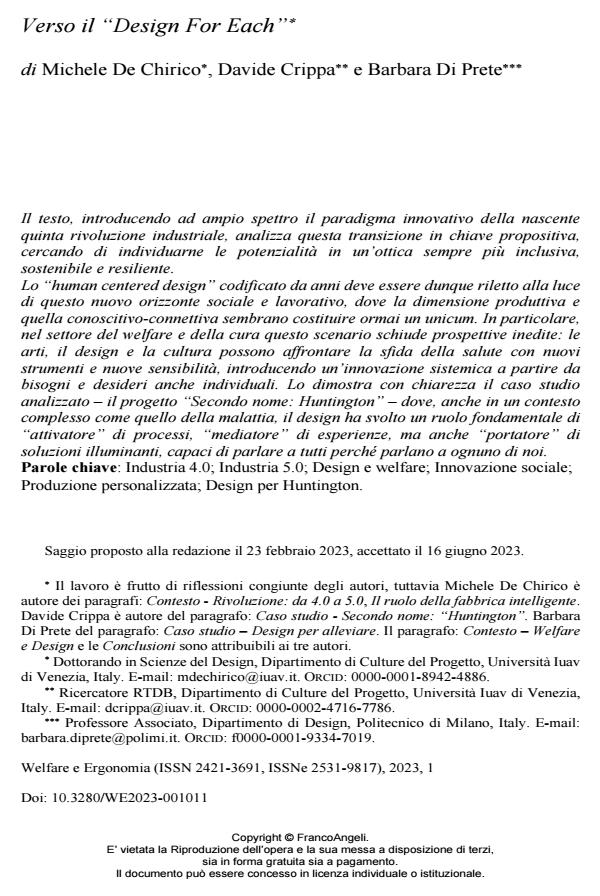Towards the "Design for Each"
Journal title WELFARE E ERGONOMIA
Author/s Michele De Chirico, Davide Crippa, Barbara Di Prete
Publishing Year 2023 Issue 2023/1
Language Italian Pages 11 P. 155-165 File size 226 KB
DOI 10.3280/WE2023-001013
DOI is like a bar code for intellectual property: to have more infomation
click here
Below, you can see the article first page
If you want to buy this article in PDF format, you can do it, following the instructions to buy download credits

FrancoAngeli is member of Publishers International Linking Association, Inc (PILA), a not-for-profit association which run the CrossRef service enabling links to and from online scholarly content.
By broadly introducing the innovative paradigm of the emerging fifth industrial revolution, the text analyzes this transition in a purposeful key, seeking to identify its potential from an increasingly inclusive, sustainable, and resilient perspective. Human-centered design codified for years must therefore be reinterpreted in light of this new social and labor horizon, in which the productive and cognitive-connective dimensions seem to constitute a unicum. In the field of welfare and care in particular, this scenario opens up unprecedented perspectives: the arts, design, and culture can address the challenge of health with new tools and new sensibilities, introducing systemic innovation starting from individual needs and desires. The “Second Name: Huntington” project, here analyzed as a case study, clearly demonstrates how even in such a complex context as a degenerative illness, design plays a fundamental role as an “activator” of processes, “mediator” of experiences but also “bearer” of enlightening solutions, capable of speaking to everyone, while speaking to each of us individually.
Keywords: Industry 4.0; Industry 5.0; Design and welfare; Social innovation; Customized production; Design for Huntington.
Michele De Chirico, Davide Crippa, Barbara Di Prete, Verso il "Design For Each" in "WELFARE E ERGONOMIA" 1/2023, pp 155-165, DOI: 10.3280/WE2023-001013